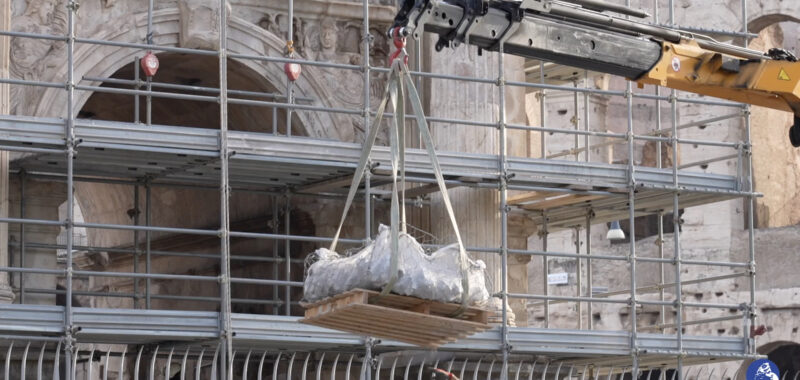A piece of one of the last great monuments of Imperial Rome was sent tumbling to the ground when lightning struck its facade during a storm on September 3.
The Arch of Constantine, erected around 315 CE next to the Colosseum in Rome, will undergo a repair of its chipped southwestern corner at a later date, during a previously scheduled restoration overseen by Italian cultural authorities.
The storm, dubbed a “water bomb” by the Italian news site Ansa, reportedly did not show up on weather forecasts before it made landfall, hitting Rome’s historic center and causing flooding and damage throughout the city.
Existing scaffolding on the Arch’s south side due to an ongoing restoration allowed maintenance workers to quickly remove other errant fragments from the strike zone and stabilize the area, Italian cultural authorities said. “We intervened promptly by collecting the fragments which are now in storage and being analyzed,” Head of the Department for the Promotion of Cultural Heritage Alfonsina Russo said in a statement shared with Hyperallergic.
The arch commemorates Emperor Constantine’s rise to power after defeating Maxentius in the Battle of the Milvian Bridge, a victory that led to the end of the Roman persecution of Christianity and brought the religion to prominence in the empire under his rule.
Fragments of the ancient arch are being held in the deposits of Colosseum Archaeological Park, where technicians will evaluate the damage until the broken segments can be replaced, Italian cultural authorities said. Restoration workers began expanding the preexisting scaffolding to make the damage zone accessible on September 5.



